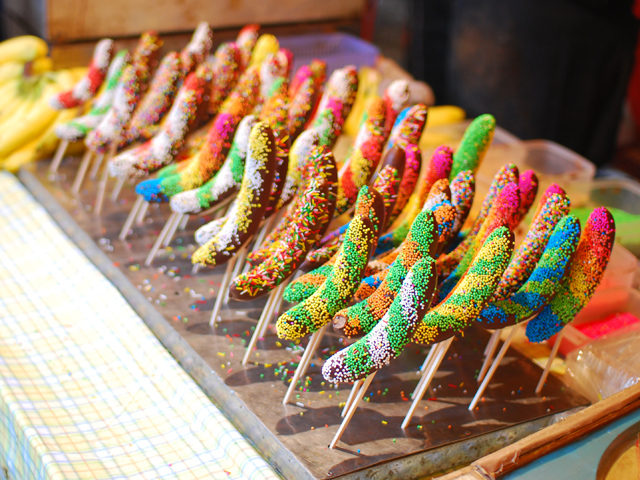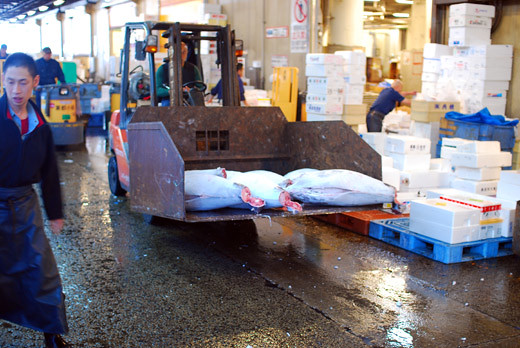I took this photo in Japan in 2010 and ever since it has been sitting in my drafts awaiting a lewd caption. Let this be an object lesson in my abject failure to craft a worthy pun.
This photo of suggestive bananas has sat in my “Drafts” for 6 years


I took this photo in Japan in 2010 and ever since it has been sitting in my drafts awaiting a lewd caption. Let this be an object lesson in my abject failure to craft a worthy pun.

Whole frozen tuna on a forklift at Tsukiji fish market, Tokyo
I have no hope whatsoever for the future of tuna. The death warrant for Atlantic tuna was written at the last meeting of the International Commission for the Conservation of Atlantic Tunas, ensuring that current tuna stocks will have a 50% chance of recovering in the next decade. The tuna is one of the only endangered species that you could buy at the supermarket to feed to your cat or rave about eating a perfect red shard atop vinegared rice without social repercussions. I doubt this prevailing attitude will change before the bluefin and yellowfin tuna are well dead.
Roughly, three quarters of the world’s tuna is eaten by Japan and from four in the morning, it looks like roughly three quarters of the Japan’s tuna is at Tsukiji fish market in downtown Tokyo. Frozen torpedoes of fish are lined up in a warehouse for auction, a visual cliche of Tokyo that wrestles for space in travel brochures with Goth Lolitas and that busy intersection in Shibuya.
The auction rooms are currently cut off to tourists thanks to its popularity and the propensity of tourists to fall beneath forklifts. (It appears that the auction area is actually open to a limited number of visitors each day (Cheers, Akila) – I must have missed the cut). Austin Bush has some excellent coverage of the auctions. I concentrated on what happens next.
The areas where the middlemen transfer and dismantle the tuna is still accessible for death by forklift. Tuna are transferred from the auction area into stalls on handcarts yoked to the elderly, motorised gurneys which appear to be the offspring of a motorcycle and a double bed, and your construction-variety forklift.
Tuna are kept cool with blocks of dry ice while they await the bandsaw. The smaller stallholders break down their morning’s buy into component cuts, dividing the buttery belly cuts from the coarser red flesh. It’s a much less sterile process that I would have expected with tuna heads piling up on the concrete floor before the flesh is removed from their cheeks, collar and eyes.
Fresh fish are hand-filleted. If you’re at all interested in the full Japanese 27-step process for breaking down a tuna, Cooking Issues comes up with the goods.
Once removed from the bone, fillets are further onsold; restaurants and smaller vendors picking up particular cuts to resell elsewhere in the city and sate the endless appetite for this doomed fish.